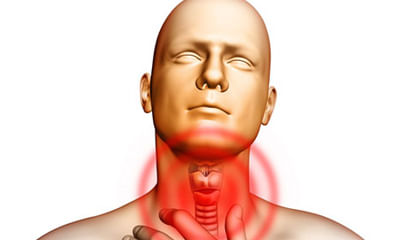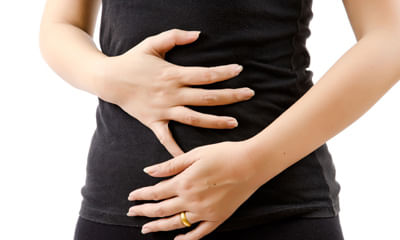Throat Burning During Pregnancy
I'm not a smoker. But passive smoker. How it effects? I have smoke and dust allergies. ...
Ask Free Question
There are two types of passive smoking as it is called: the side-stream smoke and the second hand smoke. The former is the smoke that emanates from a burning cigarette and is not filtered as it comes directly from an idly held cigarette when a smoker holds his cigarette waiting to take the next puff. The second hand smoke is not only filtered but has gone through the respiratory system and is exhaled after much of the substances are absorbed by the smoker. It is still very harmful to the non-smoker. Tobacco smoke inside a room tends to hang in mid-air rather than disperse. Hot smoke rises, but tobacco smoke cools rapidly, which stops its upward climb. Since the smoke is heavier than the air, the smoke starts to descend. Tobacco smoke contains around 7,000 chemicals, made up of particles and gases, over 50 of which are known to cause cancer. Second-hand smoke has been confirmed as a cause of lung cancer in humans by several leading health authorities. Compounds such as ammonia, sulphur and formaldehyde irritate the eyes, nose, throat and lungs. These compounds are especially harmful to people with respiratory conditions such as bronchitis or asthma. Exposure to second-hand smoke can either trigger or worsen symptoms. Pregnant women and unborn babies: Australian data indicates that about 12 per cent of women smoke during pregnancy. Both smoking and passive smoking can seriously affect the developing fetus: miscarriage and stillbirth, premature birth and low birth weight, sudden unexpected death in infants (SUDI), which includes sudden infant death syndrome (SIDS) and fatal sleep accidents, complications during birth. A non-smoking pregnant woman is more likely to give birth earlier, and to a baby with a slightly lower birth weight if she is exposed to second-hand smoke in the home â for example, if her partner smokes. Children: Children are especially vulnerable to the damaging effects of second-hand smoke: Passive smoking is a cause of sudden unexpected death in infants (SUDI), which includes sudden infant death syndrome (SIDS) and fatal sleep accidents. A child who lives in a smoking household for the first 18 months of their life has an increased risk of developing a range of respiratory illnesses, including bronchitis, bronchiolitis and pneumonia. They are also more prone to getting colds, coughs and glue ear (middle ear infections). Their lungs show a reduced ability to function and slower growth. A child is more likely to develop asthma symptoms, have more asthma attacks and use asthma medications more often and for a longer period. School-aged children of people who smoke are more likely to have symptoms such as cough, phlegm, wheeze and breathlessness. Children of people who smoke have an increased risk of meningococcal disease, which can sometimes cause death or disability. Partners: People who have never smoked who live with people who do smoke are at increased risk: Passive smoking increases the risk of heart disease. There is consistent evidence that people who do not smoke, who live in a smoky household, have higher risks of coronary heart disease than those who do not. Passive smoking makes the blood more âstickyâ and likely to clot, thereby leading to increased risk of various health conditions, including heart attack and stroke. There is evidence that passive smoking is associated with lower levels of antioxidant vitamins in the blood. Just 30 minutes of exposure to second-hand smoke can affect how your blood vessels regulate blood flow, to a similar degree to that seen in people who smoke. Long-term exposure to passive smoking may lead to the development of atherosclerosis (narrowing of the arteries). People who do not smoke who suffer long-term exposure to second-hand smoke have a 20 to 30 per cent higher risk of developing lung cancer. There is increasing evidence that passive smoking can increase the risk of stroke, nasal sinus cancer, throat cancer, breast cancer, long- and short-term respiratory symptoms, loss of lung function, and chronic obstructive pulmonary disease among people who do not smoke.
Sir, My age is 18 years. I have suffer from problem since 3 months the symptoms is breathing problem all time, burning s ...
Ask Free Question
Hi, Your physician has given you the right medicine, i.e. For acidity. It seems to be because of that only. Stomach acids are necessary for the digestion of food. However, if too much acid develops in the stomach, it can cause acid reflux (heartburn) or a disease called gastroesophageal reflux disease (GERD). Obesity, pregnancy, and other medical conditions can also lead to increased stomach acid. Management: - Avoid fried, fatty, spicy food, chocolates, tomatoes and citrus fruits. - Eat smaller, more frequent meals. - Give your digestive system an assist from gravity by not eating too close to bedtime. Wait at least 3 hours after eating before you lie down. - Lose excess weight. - Avoid alcohol and caffeinated beverages. - Stop smoking. Smoking interferes with digestion and can damage the lining of the esophagus. - Wear loose fitting clothes. Tight waistbands compress the internal organs and may block digestion. - Raise the head of your bed 4 or 5 inches higher than the foot. - Get enough sleep. Try sleeping on your left side. - Avoid stretching or bending after meals. - Chewing your food thoroughly makes it easier to swallow and digest, thus reducing or preventing symptoms of heartburn. - Drink plenty of water. Water has a neutral pH, which can help neutralize stomach acids and help your body absorb nutrients easily. Medication: Take Homoeopathic medicine – Natrum Phos. 6X/ thrice daily 1/2 an hour after the meals. Revert.
My wife is 30years old. She is two months pregnant. She is taking dufaston10mg. But after taking it she feels burning se ...
Ask Free Question
Duphaston is usually needed till 3-4 months of pregnancy, though it has its side effects along with benefits. For burning sensationanf nausea etc. You can start 1. Sy madiphala rasayana 2 tsp the times before food. She can take tender coconut juice whenever feels acidity. Try natural methods as much as possible.


